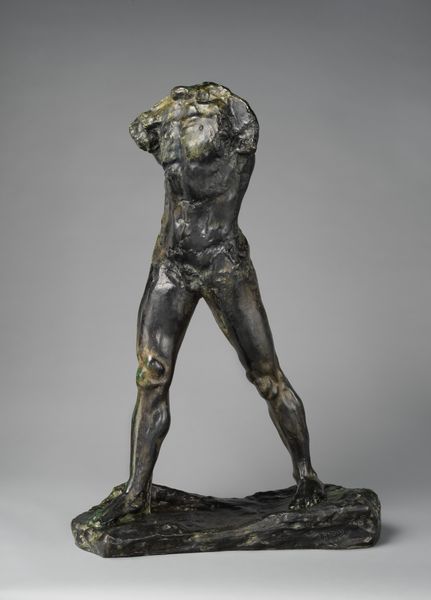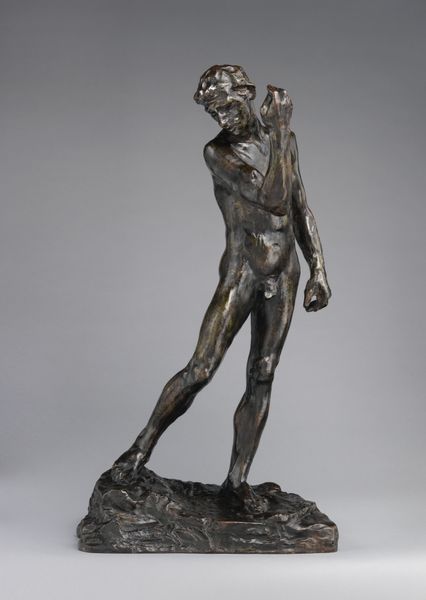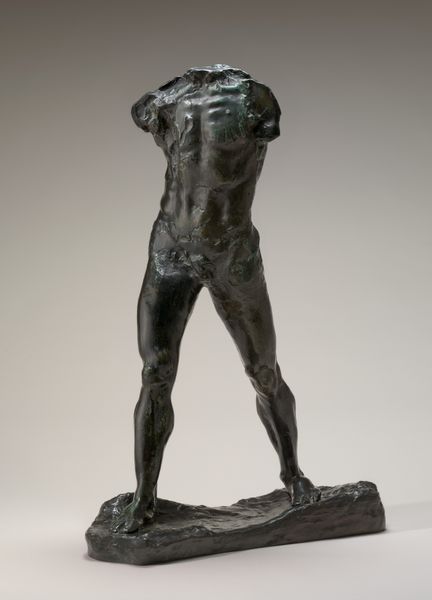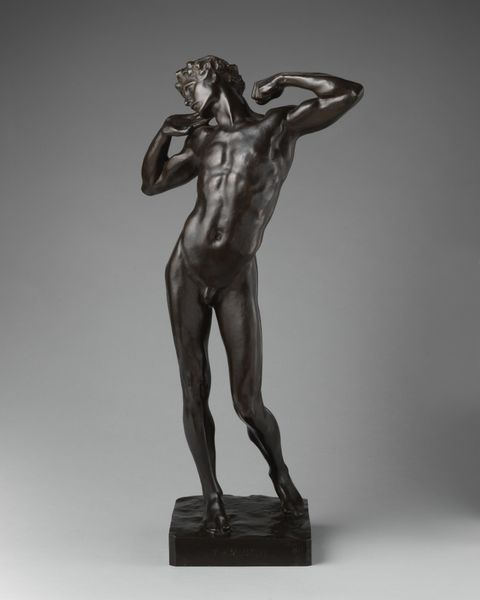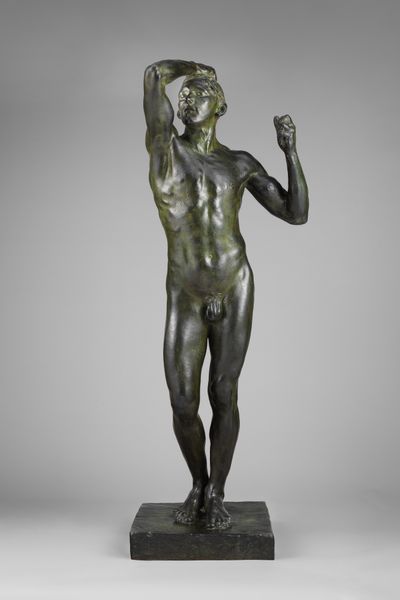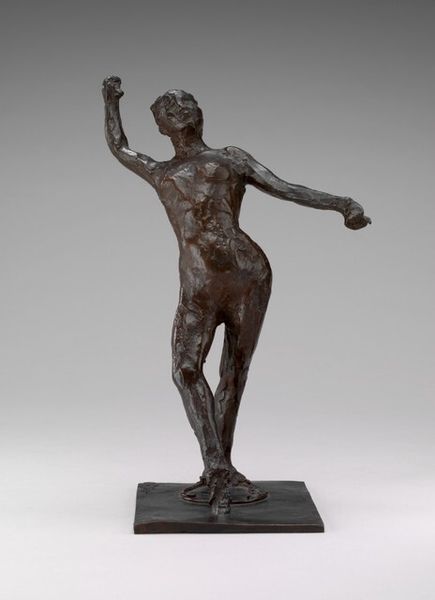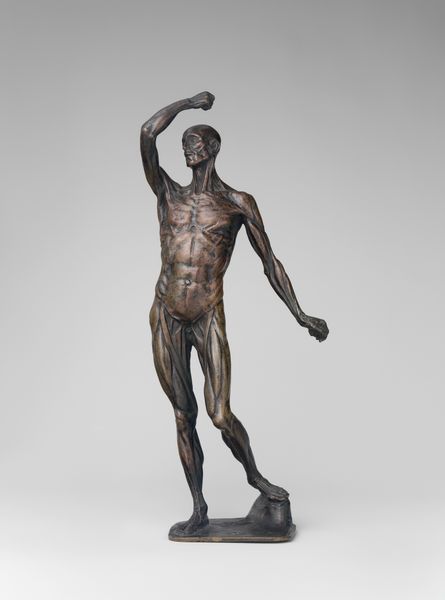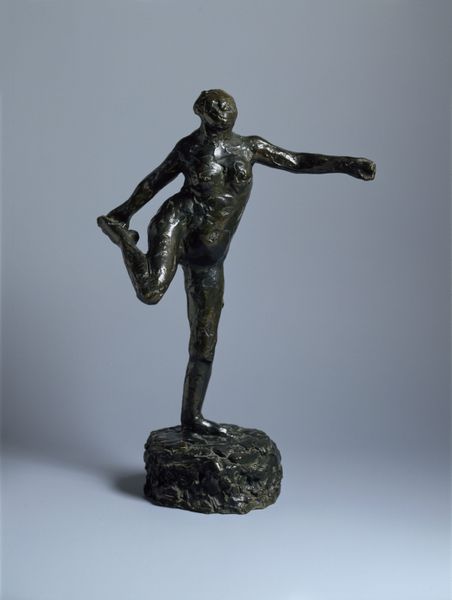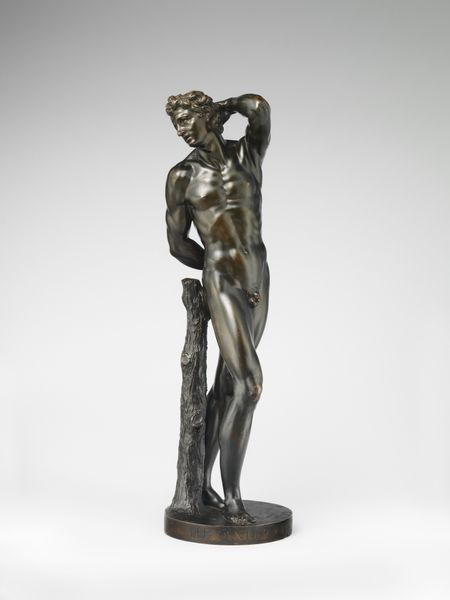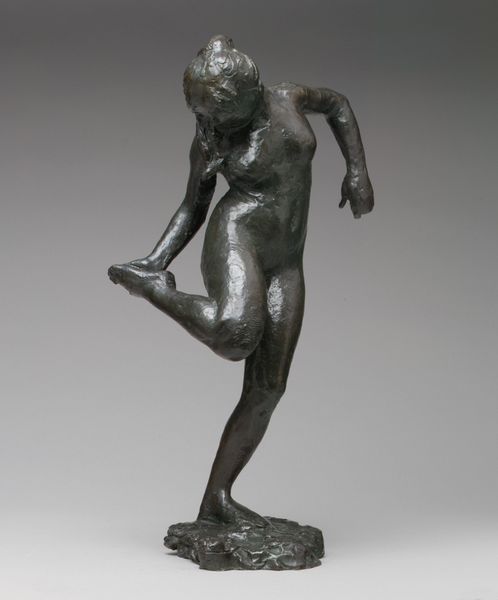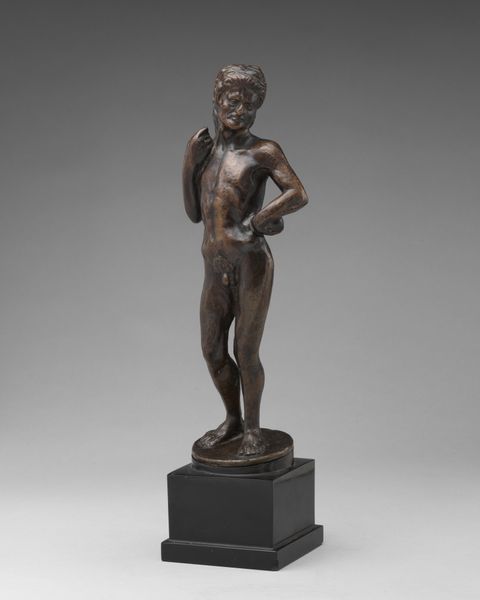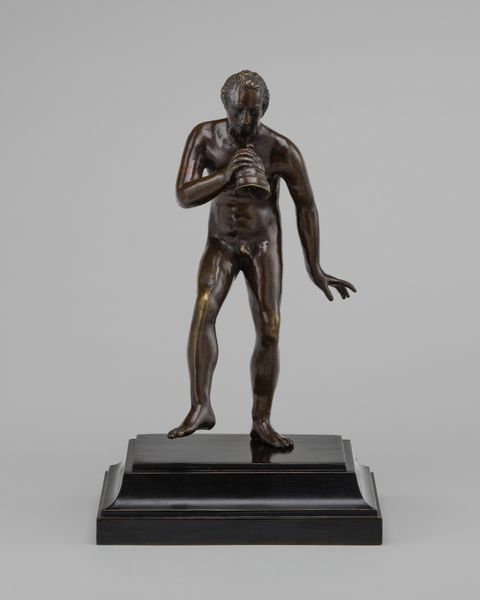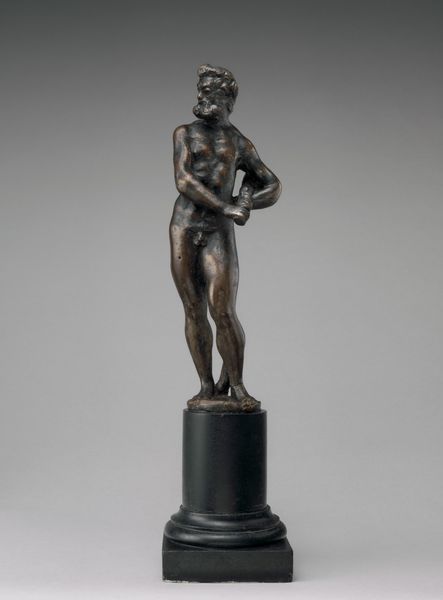
Dimensions: overall: 104.1 x 35 x 27.9 cm (41 x 13 3/4 x 11 in.)
Copyright: National Gallery of Art: CC0 1.0
Auguste Rodin made this bronze figure, The Age of Bronze, in France around 1877. Rodin’s nude male figure seems caught in a moment of transition, his gesture ambiguous, his expression unreadable. In its time, the sculpture challenged the artistic norms upheld by institutions like the French Salon. The figure's realism was so striking that Rodin was accused of making a cast from a live model. This controversy highlights a shift in the art world, moving from idealized forms to a more naturalistic representation of the human body, which can be tracked through critical reviews and artists' manifestos. Rodin's work also reflects broader cultural trends of late 19th-century France, a period marked by rapid industrialization, social change, and intellectual ferment. The sculpture invites us to reflect on the meaning of progress, the nature of humanity, and the role of art in shaping our understanding of the world. By consulting period sources, we can gain deeper insight into the complex relationship between art, society, and history.
Comments
No comments
Be the first to comment and join the conversation on the ultimate creative platform.
